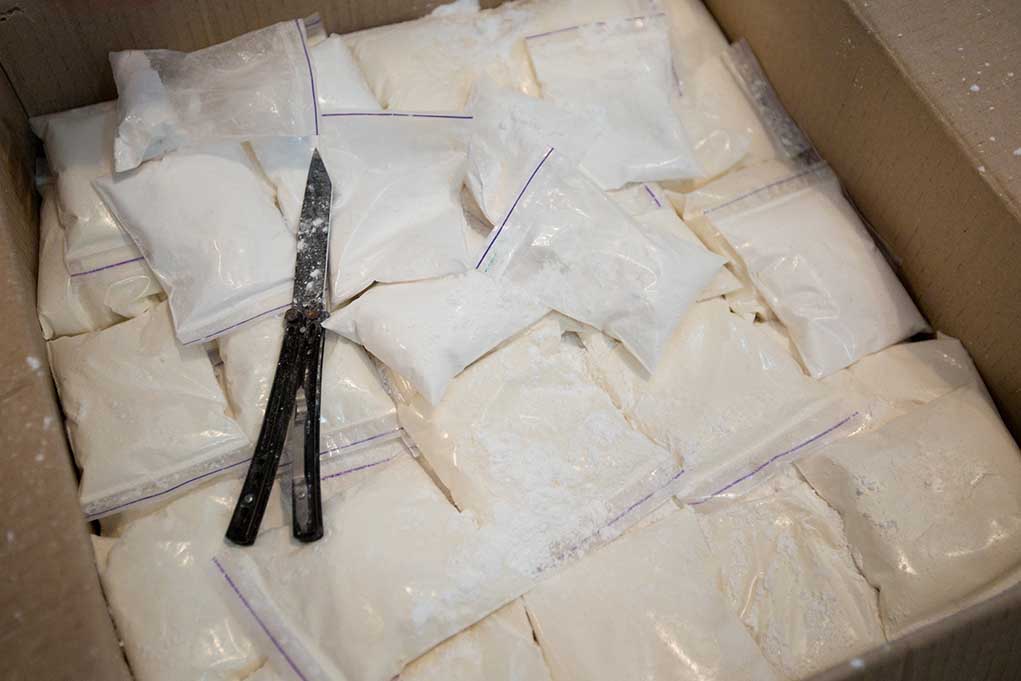
Golden Triangle drug traffickers seized a record-breaking 236 tonnes of methamphetamine last year, representing just a fraction of the actual supply flooding Asian markets as criminal enterprises outmaneuver law enforcement efforts across the region.
Key Takeaways
- Methamphetamine trafficking from the Golden Triangle region has surged 24% in the past year, with Thailand alone seizing over 100 tonnes.
- Myanmar’s ongoing civil war since 2021 has created ideal conditions for industrial-scale drug production, particularly in Shan State.
- Trafficking routes have diversified across Southeast Asia, with new corridors through Laos, Cambodia, and maritime routes connecting Malaysia, Indonesia, and the Philippines.
- Transnational criminal organizations are using digital tools and infiltrating legitimate businesses to facilitate drug operations.
- Despite some success in prevention campaigns targeting youth, overall methamphetamine use is increasing across the region, particularly among older demographics.
Record-Breaking Drug Seizures Signal Massive Trafficking Operations
The United Nations Office on Drugs and Crime (UNODC) has reported an unprecedented surge in methamphetamine trafficking from the Golden Triangle region, where Myanmar, Laos, and Thailand converge. In the past year alone, authorities seized a staggering 236 tonnes of methamphetamine across East and Southeast Asia, marking a 24% increase from the previous year. Thailand has been at the forefront of interception efforts, confiscating over 100 tonnes of methamphetamine, including approximately 1 billion methamphetamine tablets. Despite these impressive numbers, experts warn that seized quantities represent only a fraction of the drugs reaching the market.
“The 236 tons represent only the amount seized; much more methamphetamine is reaching the market,” said Benedikt Hofmann, UNODC acting regional representative.
The methamphetamine trade’s expansion has been facilitated by industrial-scale production operations run by sophisticated criminal networks. These organizations have established manufacturing facilities primarily in Myanmar’s Shan State, where tablets can be produced for as little as $0.60 each. The low production costs coupled with high street values create enormous profit margins for traffickers, fueling the continued growth of this illicit industry despite enforcement efforts.
2024 saw a record amount of methamphetamine seizures in East and Southeast Asia, says @UNODC in new report.https://t.co/MbQ2DOTCX0
— UN News (@UN_News_Centre) May 28, 2025
Myanmar’s Political Crisis Fuels Drug Production
The political instability following Myanmar’s military takeover in February 2021 has created ideal conditions for drug production and trafficking to flourish. The ensuing civil war has diverted government resources away from drug enforcement and created ungoverned spaces where criminal enterprises operate with impunity. Drug flows have significantly increased across East, Southeast, and South Asia, with particularly concerning expansions into Northeast India. Despite the broader chaos in Myanmar, drug production zones enjoy a perverse form of stability that benefits criminal organizations.
“There is a degree of stability in certain parts of the country, especially those known for large-scale synthetic drug production,” explained Benedikt Hofmann, UNODC acting regional representative.
The political turmoil has allowed traffickers to establish more sophisticated production facilities and distribution networks. Manufacturing operations have shifted toward industrial-scale production models that can rapidly produce massive quantities of both crystal methamphetamine and methamphetamine tablets. These organizations have proven remarkably adaptable, effectively countering law enforcement strategies and continually finding new trafficking routes when established corridors come under pressure.
Myanmar: A recent report by the United Nations Office on Drugs and Crime (UNODC) highlights a dramatic rise in the production and trafficking of synthetic drugs from the Golden Triangle, specifically methamphetamine.
In 2024, East and Southeast Asia saw methamphetamine seizures… pic.twitter.com/OwRUSzekRl
— Crime Intel (@WorldCrimeIntel) May 28, 2025
Expanding Trafficking Routes and Criminal Innovation
Drug trafficking routes from the Golden Triangle have diversified significantly in recent years, with neighboring countries increasingly serving as conduits for methamphetamine distribution. The corridor connecting Cambodia with Myanmar through Laos has expanded rapidly, creating a new major trafficking channel. Additionally, maritime routes linking Malaysia, Indonesia, and the Philippines have become increasingly important, with Malaysia’s Sabah region emerging as a key transit hub for sea-based trafficking operations.
“The trafficking route connecting Cambodia with Myanmar, primarily through Lao PDR, has been rapidly expanding,” noted Inshik Sim from the UNODC.
Beyond regional distribution, international connections have also been discovered. Some drugs entering Southeast Asia originate from the “Golden Crescent” region encompassing Afghanistan, Pakistan, and eastern Iran. More alarmingly, methamphetamine linked to Mexican cartels has been identified in several Asian countries, suggesting global criminal partnerships. Drug trafficking organizations have embraced technological innovation, utilizing digital tools and infiltrating legitimate businesses to facilitate operations. The growing convergence between drug trafficking groups and providers of services like underground banking has created a more resilient criminal ecosystem that’s increasingly difficult for authorities to disrupt.
Public Health Impacts and Prevention Challenges
The flood of cheap, high-purity methamphetamine has created significant public health challenges across East and Southeast Asia. Overall, methamphetamine and ketamine use is rising throughout the region, with a concerning increase among older drug users in countries like Malaysia, Singapore, and Thailand. This demographic shift suggests that while prevention campaigns targeting youth may have achieved some success, the broader battle against drug addiction continues to escalate. The UNODC has emphasized the urgent need for increased investment in both prevention strategies and supply reduction efforts.
“The sustained flood of methamphetamine to markets in the region has been driven by industrial-scale production and trafficking networks operated by agile, well-resourced transnational organized criminal groups,” stated the United Nations Office on Drugs and Crime (UNODC).
The combination of inexpensive production costs, sophisticated distribution networks, and established demand has created a perfect storm for continued methamphetamine trafficking. As law enforcement agencies struggle to make meaningful impacts on supply, prevention, and treatment programs become increasingly vital. However, the resources dedicated to these public health approaches remain insufficient compared to the scale of the problem. Without a coordinated regional response that addresses both supply and demand factors, the methamphetamine crisis in Southeast Asia appears poised to worsen in the coming years.












